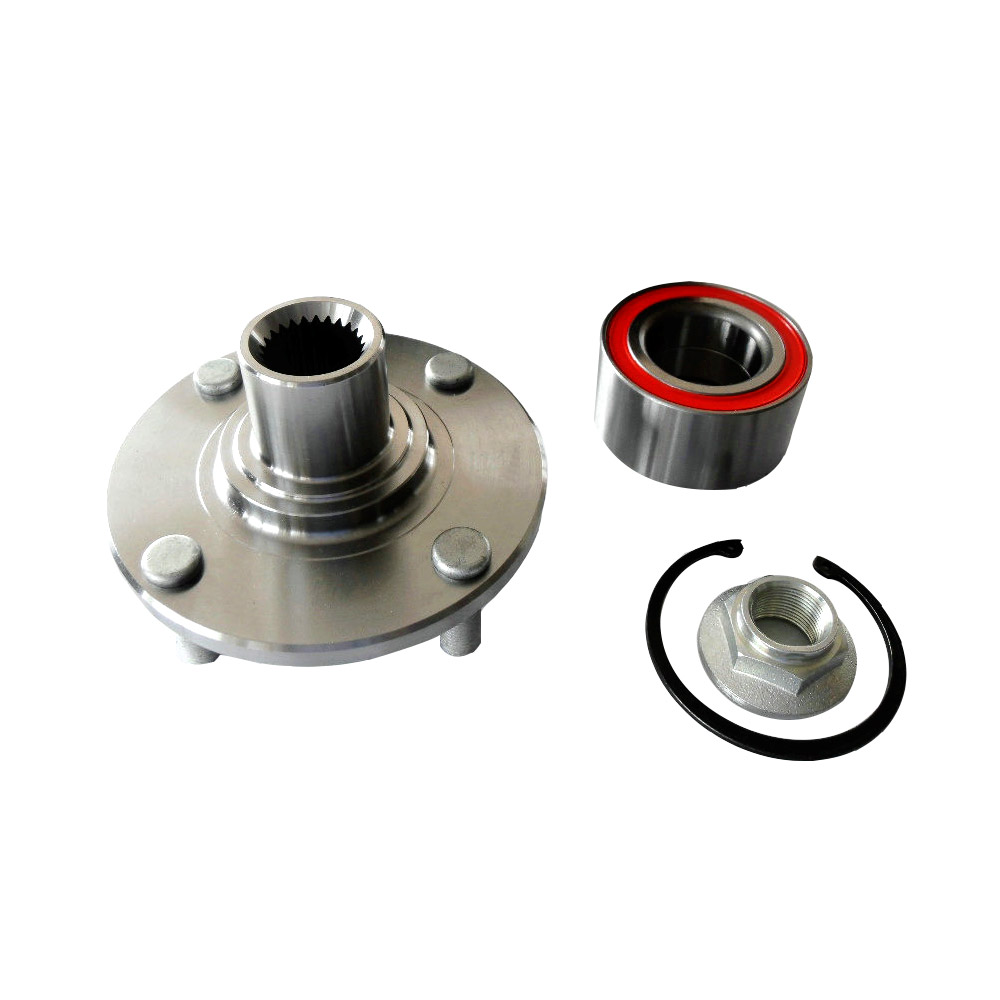Wheel Hub Bearing is a vital component in the car suspension system, supporting the rotation of the wheel and bearing the radial and axial loads from the wheel. Its performance directly affects the vehicle's handling, comfort and driving safety. With the rapid development of the automotive industry and the continuous innovation of technology, the design and manufacturing of wheel hub bearings are also constantly improving to meet higher requirements.
The main function of the wheel hub bearing is to provide support for the rotation of the wheel, so that the wheel can rotate smoothly with minimal friction. This helps to improve the vehicle's fuel efficiency and reduce wear.
During the driving of the car, the wheel hub bearing not only has to bear the weight of the vehicle itself, but also has to deal with various impacts caused by uneven roads. Therefore, it needs to have sufficient strength and durability.
The good condition of the wheel hub bearing can ensure the stability of the vehicle's steering wheel and enable the driver to better control the vehicle. This is crucial to improving the driving safety of the vehicle.

The first generation of wheel hub bearings is the most basic type, usually consisting of two separate ball bearings or tapered roller bearings, which require regular lubrication and maintenance. They are mostly used in early models and light vehicles.
The second generation wheel hub bearing has improved structure, integrating the bearing and wheel hub flange together, making installation and maintenance easier. This design makes the bearing positioning more precise and reduces the need for maintenance.
The third generation wheel hub bearing is the most advanced type at present. It integrates sensors and bearing components together, which can monitor the speed, temperature and other information of the wheel in real time, and provide data support for ABS (anti-lock braking system) and ESP (electronic stability program).
The fourth generation wheel hub bearing adds electric drive function on the basis of the third generation, making it applicable to electric vehicles. This bearing provides power support for the wheel side drive system through integrated motor drive, which helps to improve the endurance and efficiency of electric vehicles.
Long-term use or driving under bad road conditions may cause bearing wear or loosening, abnormal noise, shaking and other problems. Preventive measures include regular inspection and replacement of lubricating grease, and maintaining good driving habits.
In humid or saline-alkali environments, wheel hub bearings are prone to rust and corrosion problems, which affect their service life. For this reason, bearings with anti-corrosion coating should be selected and long-term wading driving should be avoided.
If the vehicle is overloaded or driven on bumpy roads for a long time, the wheel hub bearing may be damaged due to excessive force. Therefore, avoiding overloading and overly intense driving behavior can help extend the service life of bearings.
In the future, wheel hub bearings will use more high-strength, high-temperature resistant materials such as ceramics and composite materials to improve the service life and performance of bearings. At the same time, these materials can also reduce the weight of bearings and improve the fuel economy of vehicles.
With the continuous advancement of automobile intelligence, wheel hub bearings will integrate more sensors and data acquisition functions, such as wheel speed sensors, temperature monitoring, etc., to provide more accurate data information for autonomous driving and intelligent control systems.
The popularity of electric vehicles has put forward higher requirements for wheel hub bearings. Future wheel hub bearings will be more adapted to the characteristics of electric vehicles, such as high speed and high torque, while having good energy conduction and heat dissipation performance.
With the improvement of wheel hub bearing technology, the new generation of products will further reduce the need for lubrication and maintenance, extend the replacement cycle, and reduce the cost of vehicle use.
As an indispensable key component in automobiles, the performance of wheel hub bearings directly affects the driving quality and safety of vehicles. With the continuous development of the automobile industry, wheel hub bearing technology is also constantly improving, from material innovation to intelligent integration, so that it can adapt to the various needs of modern automobiles. In the future, with the further advancement of intelligence and electrification, the application prospects of wheel hub bearings will be broader, making important contributions to improving the performance and safety of automobiles.






